The Chatham Arts Council is investing in artists through our Meet This Artist series, introducing you to 12 Chatham County artists each year in a big way. The fine folks at Hobbs Architects in downtown Pittsboro are powering our Meet This Artist series this year. Architecture is art, and the Hobbs crew values art in our community.
Take a look. Meet your very inspiring neighbors. Meet This Artist.
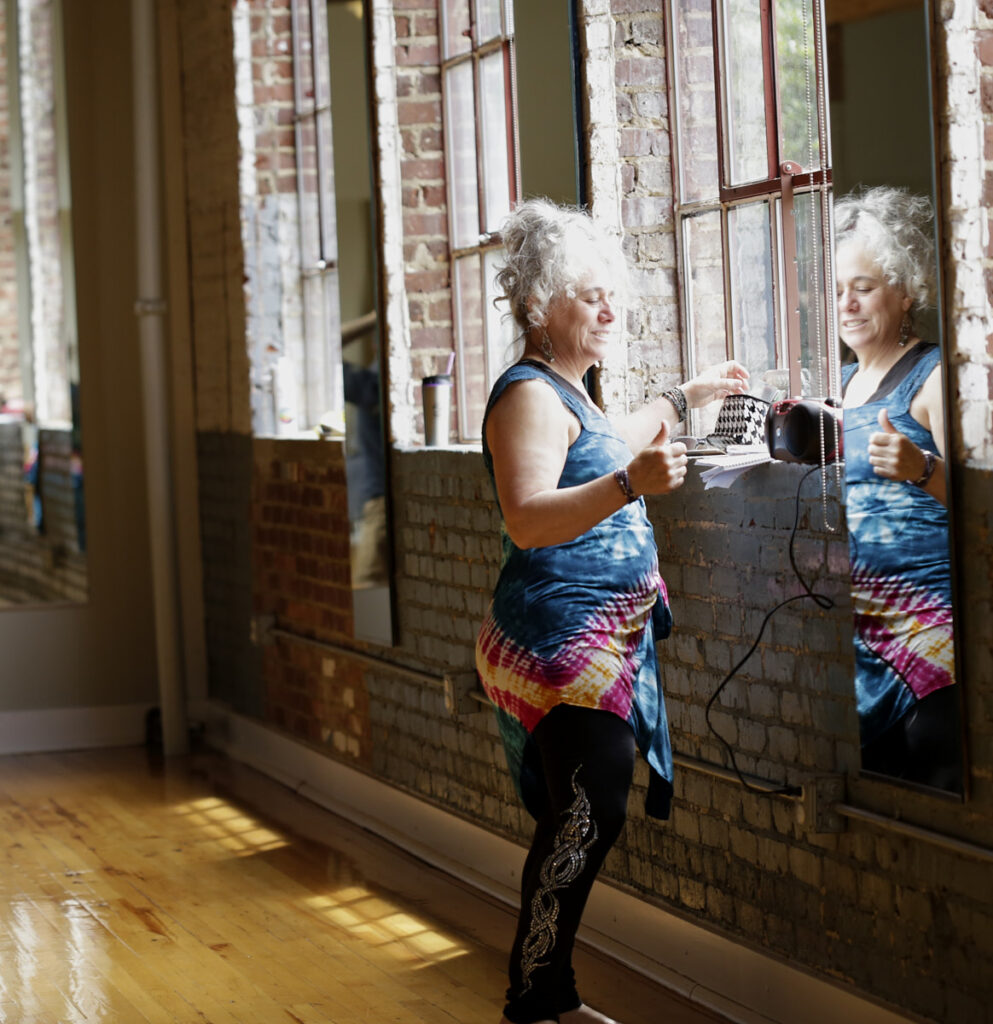
As morning light bathes the Joy of Movement studio at Chatham Mills in a warm glow, the sounds of Earth, Wind & Fire, Michael Jackson, and Aretha Franklin fill the air, emanating from a CD player perched on the window sill. In the center of the studio, Inclusive Dance Artist Maria Troiani Howard stands with grace and enthusiasm, ready to lead her diverse dance group.
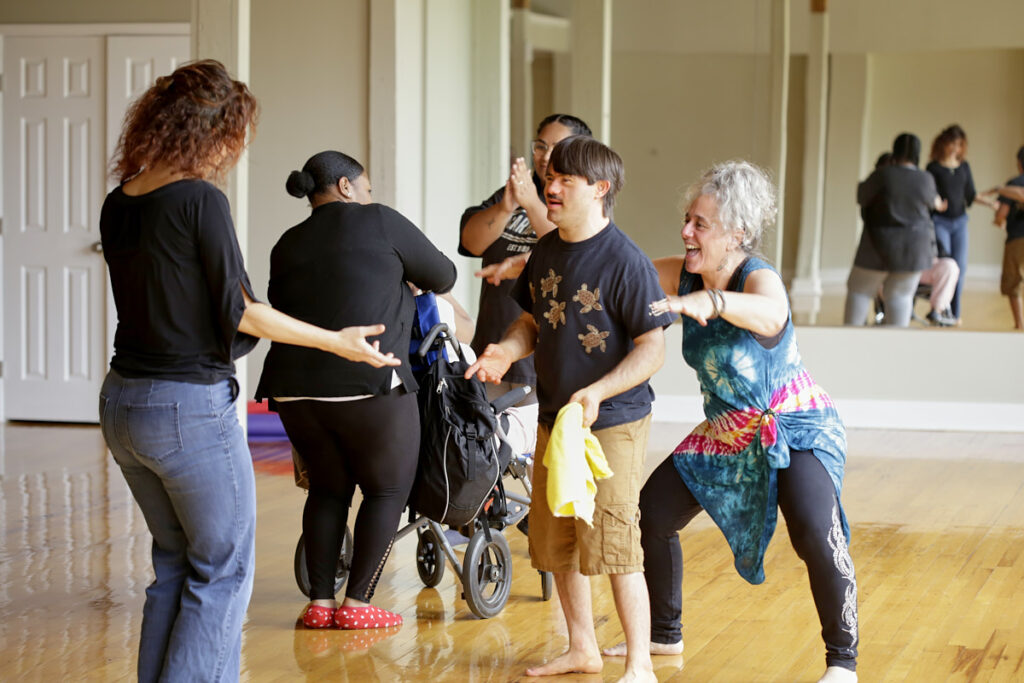
Inclusive Dance is dance for, with, and by people with visible and invisible disabilities–and today each dancer, unique in their own way, prepares to introduce themselves through a movement that conveys the essence of “hello.” The studio suddenly comes alive with a vibrant tapestry of greetings. Maria, beaming with pride, embraces the diversity and creativity of her dance group, fostering an inclusive and nurturing environment where everyone’s unique voices can be heard and celebrated.
What is unique about inclusive dance?
I could teach Jazz, for example. I could say, “Let’s chassé, and let’s pas de bourrée, and let’s jazz hands!” But I don’t use those terms with this population. I start with a theme or subject. So, I might say, “What’s your favorite thing to do outside?” and someone may say, “Oh, I love to watch the birds.” This leads to movement; how does watching the birds make you want to move? All of a sudden, I’m getting this creative movement that I can put into our dance and pull it all together, and we have this creation that wouldn’t have been created typically.
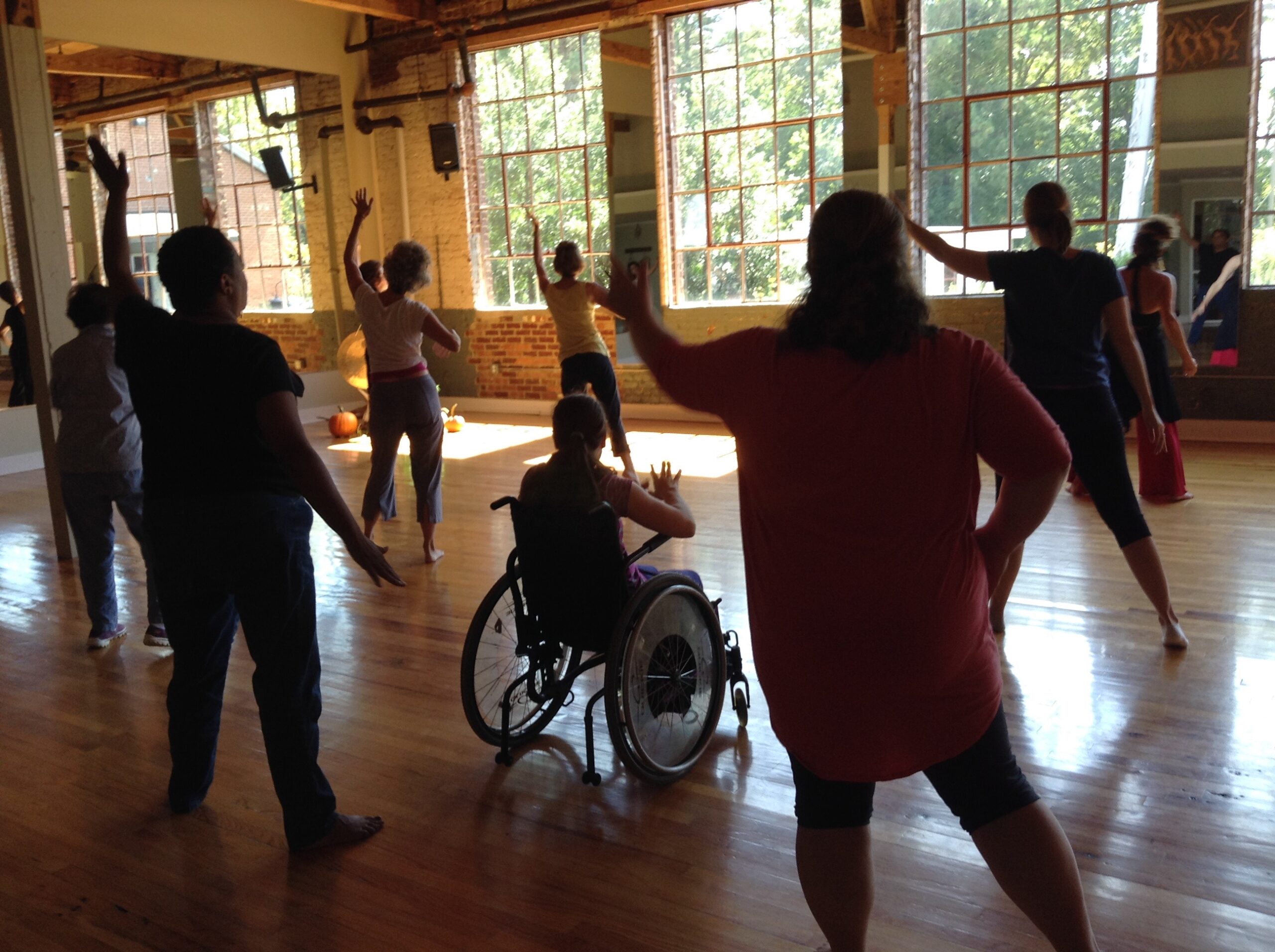
How did your journey with inclusive dance begin?
There was a documentary, A New Kind of Listening, which I highly recommend, if you can find that. It was about inclusive arts. They did this initiative throughout the state to get people to do inclusive arts in communities. At the same time, I was also taking training with the North Carolina Arts Council and NC Arts Council. It was teaching the teachers to teach dance to people with disabilities. There, I got to see how my wonderful teacher, Michelle Pearson [of Black Box Dance Theatre], worked with different communities (the prisons, veterans, etcetera) to integrate technically trained dancers with these communities. And I loved it! I love that! To integrate people in the community with technically trained dancers.
And the art that’s created! It’s beyond a dance studio where everybody is choreographed the same thing, and it’s beautiful and technically wonderful. This brings a different element, a different perspective.
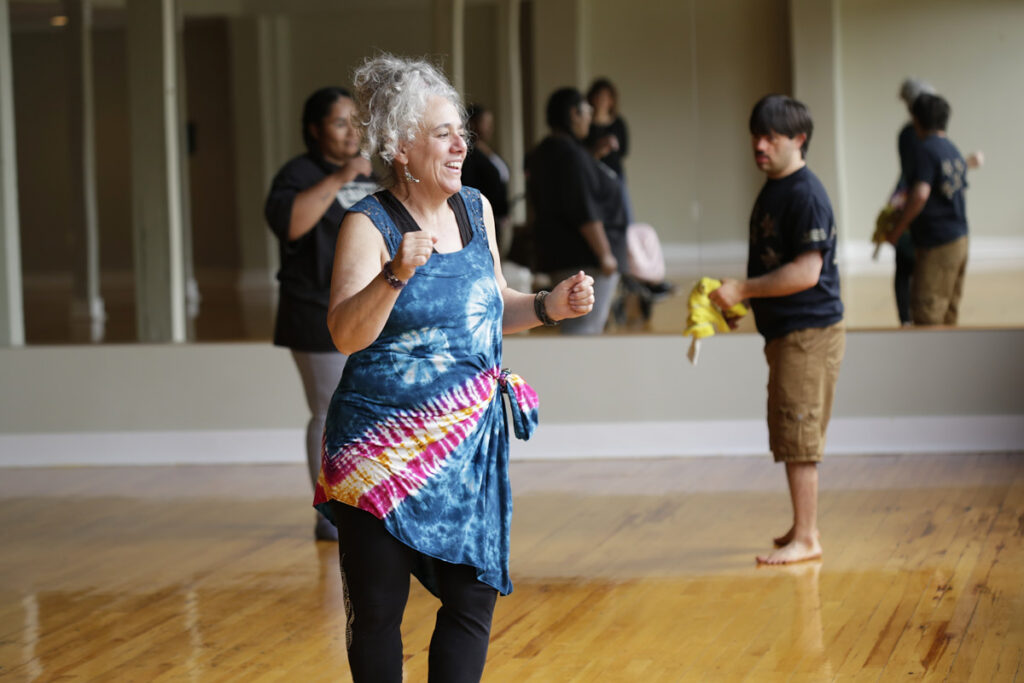 Tell me a little bit about your work with Joy of Movement.
Tell me a little bit about your work with Joy of Movement.
With Joy of Movement, I started dancing there when I first moved here about twelve years ago. It was privately owned, the studio, and then it became a nonprofit. I was on the board of directors for that nonprofit. Part of the vision of the Joy of Movement was to have community connections.
So I was like “Hey, I have connections to people with disabilities.” The studio offered me free rent, and I volunteered to teach the class. And we brought in different groups, so I taught inclusive dance. And brought in guest teachers from the Joy of Movement. That’s how this class got started.
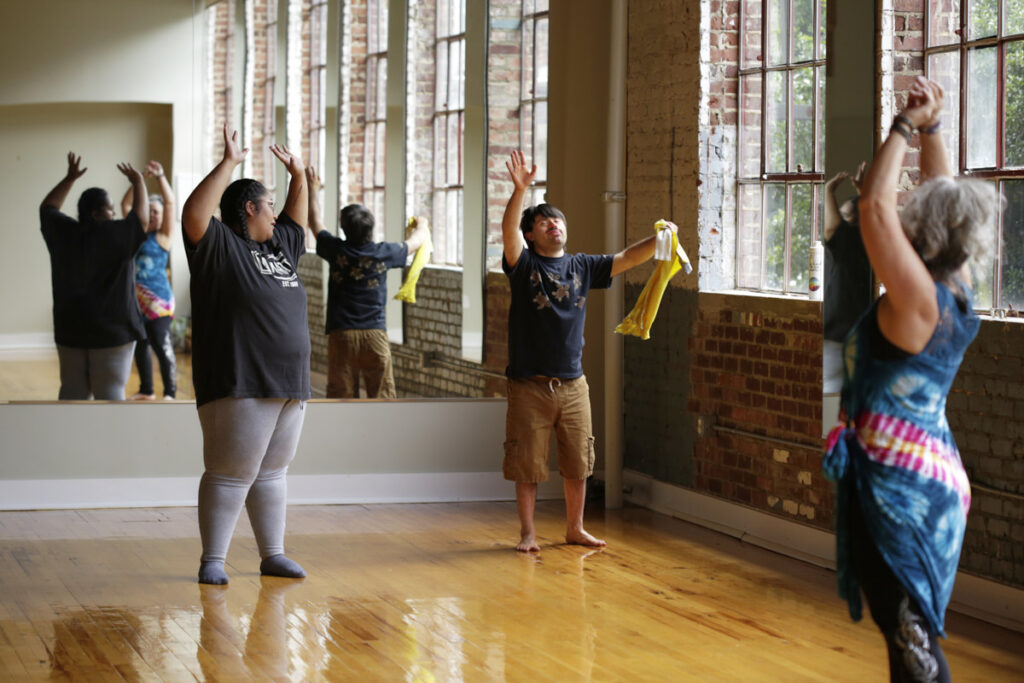 Now the Joy of Movement is no longer a nonprofit organization. This particular class I started in February, because the Joy of Movement closed as a nonprofit (the studio reopened under new management). I call it the All-In! Community Collective, and I want to reach a group of people that don’t normally have access to dance and the arts. It’s fairly “easy” to go to the schools, to go to the supportive employment places, to go to a day program, and say, “I’m here to volunteer to teach dance.” It’s fairly easy because people are already assembled. My goal is to reach people in the community that don’t have those programs. People like my son, who doesn’t really fit in one of the local programs. I also want to bring people in those programs out into the community.
Now the Joy of Movement is no longer a nonprofit organization. This particular class I started in February, because the Joy of Movement closed as a nonprofit (the studio reopened under new management). I call it the All-In! Community Collective, and I want to reach a group of people that don’t normally have access to dance and the arts. It’s fairly “easy” to go to the schools, to go to the supportive employment places, to go to a day program, and say, “I’m here to volunteer to teach dance.” It’s fairly easy because people are already assembled. My goal is to reach people in the community that don’t have those programs. People like my son, who doesn’t really fit in one of the local programs. I also want to bring people in those programs out into the community.
Tell me more about access to inclusive arts for all.
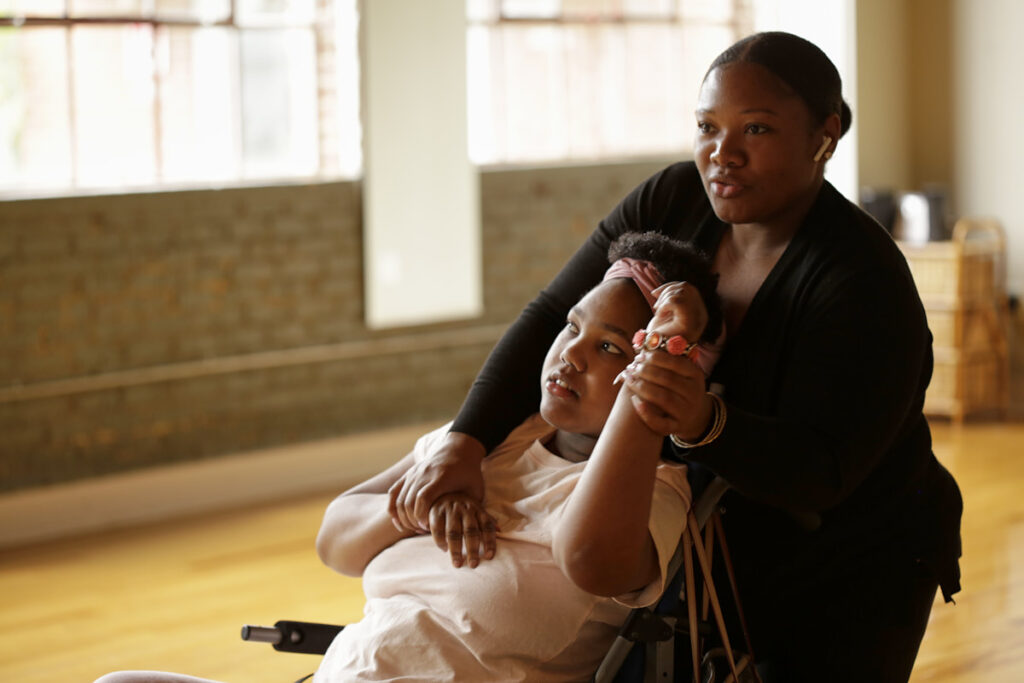
I’d like to talk about some of the barriers to this type of thing. Funding, transportation, and navigating the system. I am the sole person who does the contact of the group, managing the schedule. For those out in the community in need of access, I am getting the funding for their classes. I was taking this on myself. I found myself coordinating paperwork for all these different funding streams, getting forms printed and signed, and communicating with guardians and case workers.
It takes people on the other side who are committed to this. I had a case manager, this was thirteen years ago, and she was my son’s case manager. And I said, “I want to do this. I want to have this inclusive dance group.”
She said, “Well, I’ve got six or eight people that would be interested in this.” She really helped bring in those people, and they all had funding at the time. So, she took care of the paperwork, and she had the caregivers get them to me. But then she migrated out, and I found myself doing a lot of this myself.
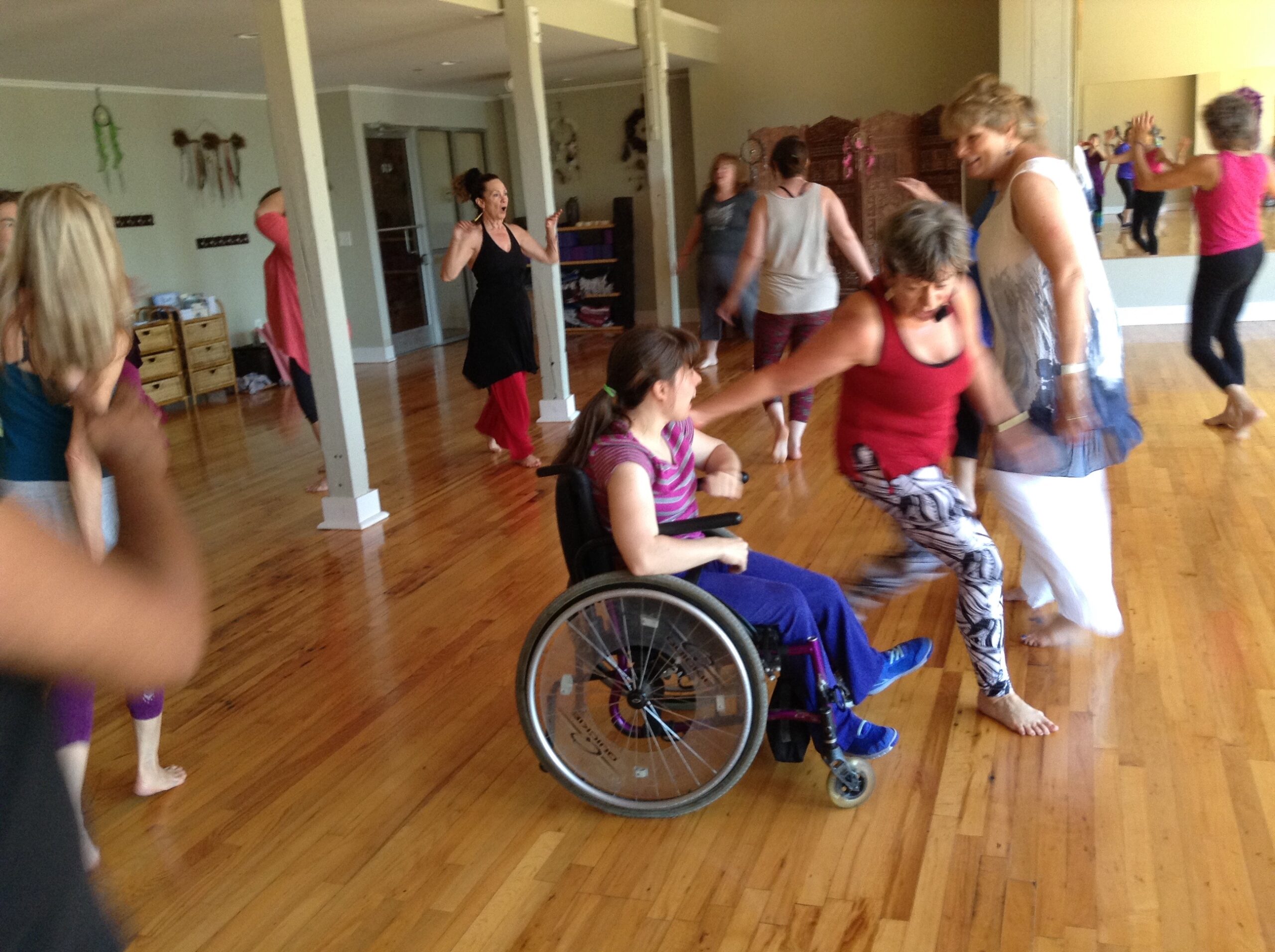
What inspires you?
The diverse, the deep, the creative potential for dance choreography. What I’ve found teaching this population is that when I ask for something, whether it is visual art or dance, I get the unexpected. It’s like, “Wow, look at all this variation! Yes!” That just excites me! It’s still a dream of mine and a vision of mine to bring trained dancers together with people with disabilities or differences. On the same stage, doing the same piece. That’s really what I love to do.
If you want to be a part of Chatham’s Inclusive Dance community, reach out to Joy of Movement through their Facebook page, or contact Maria directly.
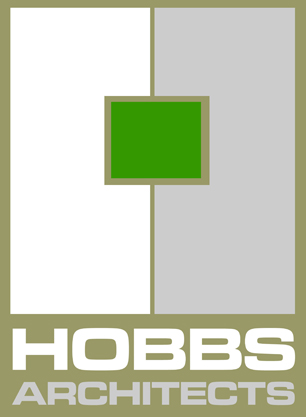
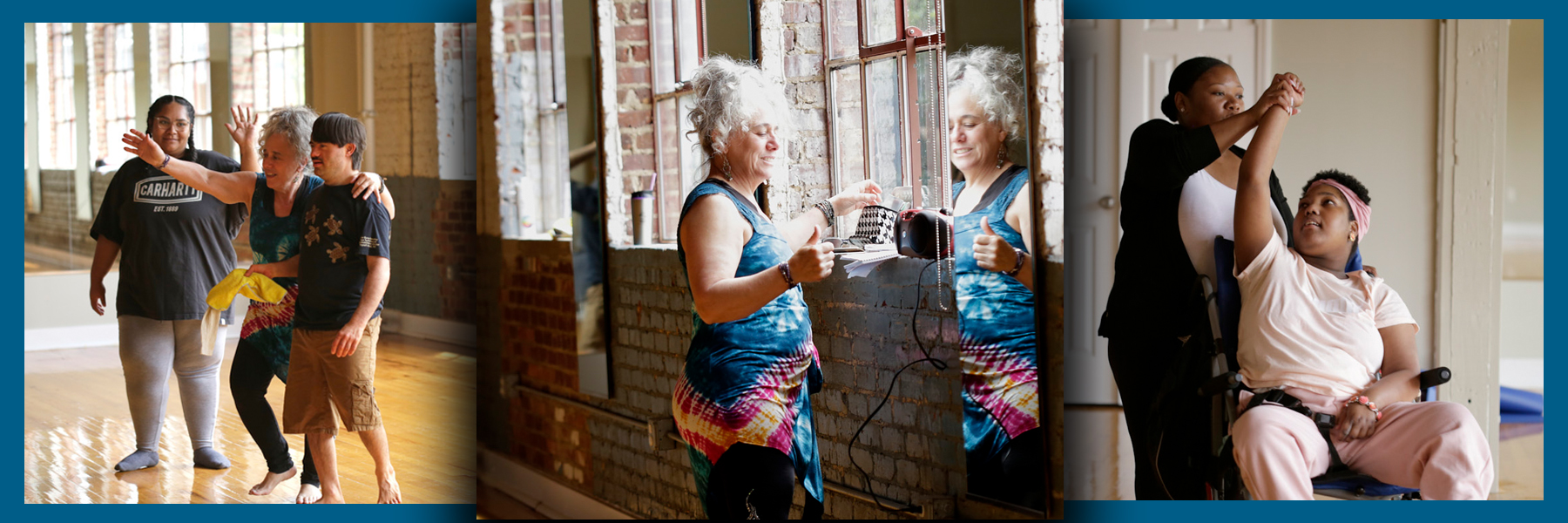
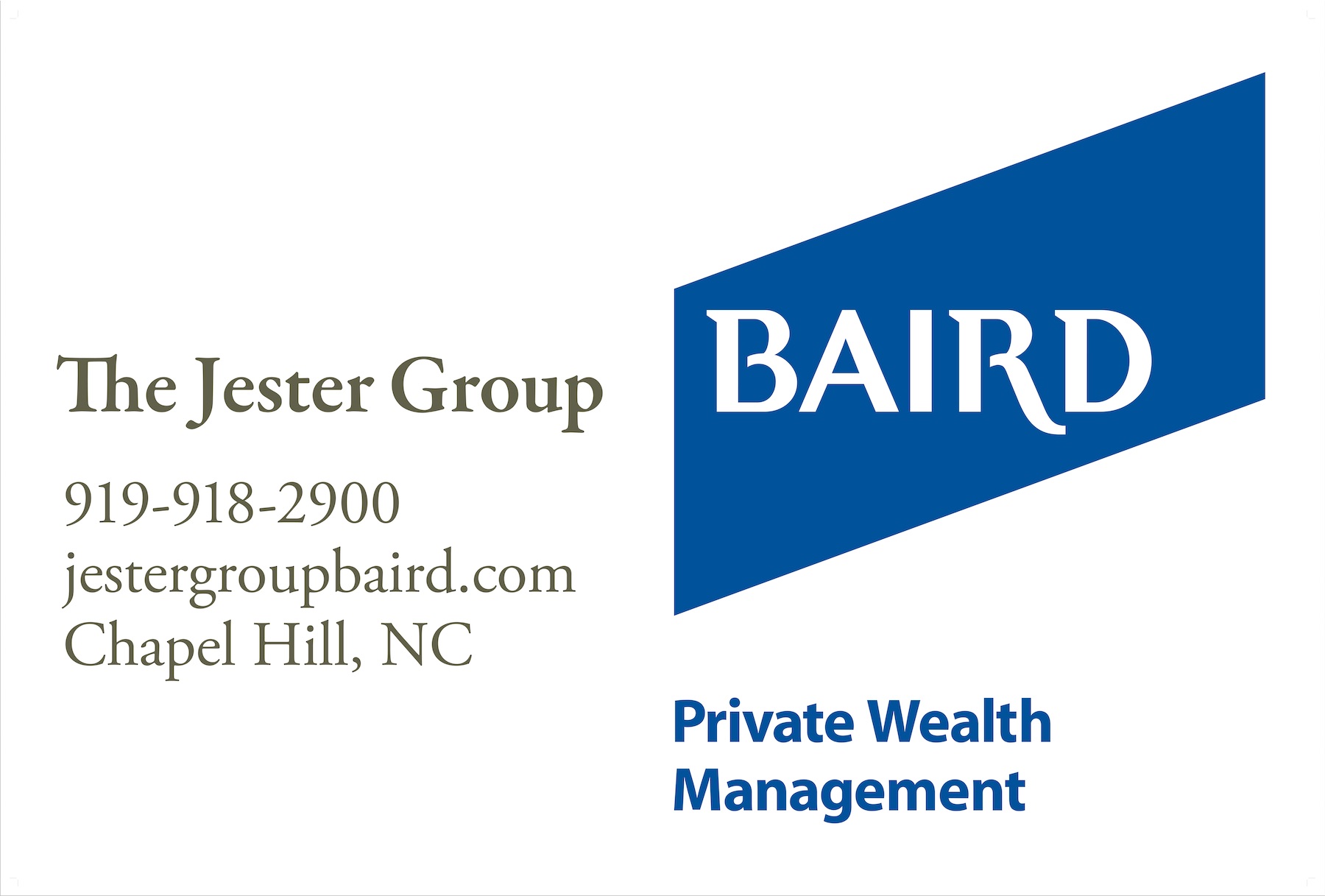

Leave a Reply